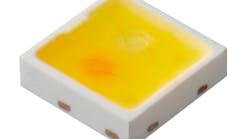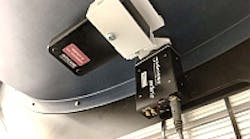Tourists enjoying an evening stroll along l’Avenue des Champs Elysees in Paris, the boulevards of Monte Carlo or the Las Vegas strip have an Asian entrepreneur to thank for the colorful, decorative lighting that enhances the atmosphere.
The company he founded in Taiwan in 1978, Neo-Neon Int’l Ltd, now sells 60% of the world’s Christmas lights as well as 30% of other decorative lighting in the US, 15% in Europe and 20% in Asia.
Neo-Neon is also a major producer of hi-tech light-emitting diode (LED) decorative illumination products worldwide and has received many international awards for design and quality, while Fan himself won the Young Industrialist Award in Hong Kong in 1998. “The secrets to our success are creating and offering affordable products,” he says.
The business really lit up in 1989 when costs were lowered by transferring production to He Shan, Guangdong Province on the Chinese mainland, investing US$123 million in a 53-hectare, 100-employee site that includes 400,000 square meters of floor space.
He Shan, together with offices in Hong Kong, Taipei and Macau, helped Neo-Neon reap revenues of US$150 million in 2004. “I expect earnings to grow by up to 30% in 2005,” Fan adds.
His optimism is fuelled by a significant decision to invest heavily in R&D into LEDs. "We have been highly devoted to R&D since 2000," Fan says.
Smaller and safer as well as being more energy-efficient, environmentally friendly, durable and cooler to the touch than ordinary light bulbs, the revolutionary lights could theoretically produce tens of millions of colors, Fan observes. “The future of LEDs is unlimited,” he adds.
Since beginning the R&D in 1996 that led to the mass production of LED decorative lights in 2002, Neo-Neon has put dozens of LED products on the market — including bendable neon lights and disco lights.
“Bendable LED neon lights, for example, consume 90% less power than traditional glass-wrapped neon lights and last 10 times longer,” Fan says. “As concerns over energy supplies grow worldwide, LED lighting products seem certain to gain greater popularity.”
Fan projects continued strong growth for LED products, sales of which have doubled every year over the past few years. “LEDs currently account for about 20% of our sales but are expected to make up half of total revenues in three years’ time,” he predicts, “so we plan to increase investment in R&D for LED applications.”
Neo-Neon employs some 200 engineers and spends 5-8% of its revenue on R&D each year. The company has obtained more than 350 patents in Taiwan, Japan, the US, Hong Kong and Australia.
"A key R&D focus will be further improving the brightness of high-power LEDs," Fan explains. "Another area of emphasis will be disco lighting, in particular enhancing laser applications and technical intelligence."
Disco lighting will be a driving force in Neo-Neon’s future growth as the company continues to enjoy technology and competitive cost advantages over mainland and overseas rivals.
Fan is determined to rectify this situation with a two-pronged strategy that stresses the growth of Neo-Neon own brands via a “do-it-yourself” program in developed markets such as the US.
“The idea is to place products with Neo-Neon’s own brands in hardware and home improvement stores such as Home Depot,” he explains. “By bringing products closer to consumers, we can also reduce prices by eliminating certain tiers of distribution.”
Neo-Neon is also implementing a franchising plan for the Chinese mainland market and plans to establish as many as 40 franchised stores in key cities such as Shanghai, Beijing, Guangzhou and Chengdu by the end of 2005.
“I hope that sales of products carrying Neo-Neon’s own labels will grow to account for 40% of total sales in three years,” Fan concludes.
Contact information:
Neo-Neon Ltd
Email: [email protected]
Neo-Neon Int'l Ltd
Gong He Town, He Shan City,
Guangdong, China 529728
Tel: +86-750-8300941
Fax: +86-750-8300940
Asia Division: Mr Ben Lam + 86-13828023290
USA Disvision: Mr Keith Lam +86-13680416048
Europe Division: Mr John Jang +86-13902556414 or Mr Alex So +86-13827023189









